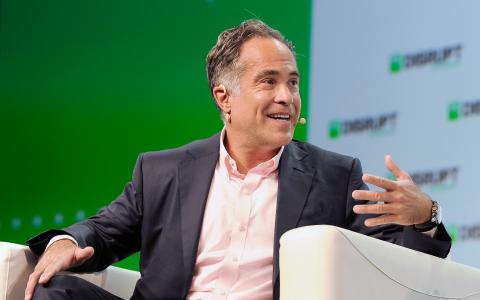
The coronavirus crisis has sped up the march of the robots on Wall Street, according to Marty Chavez, the former Goldman Sachs finance boss and architect of the US banking giant’s move to automate large parts of its trading floor.
The 56-year-old banking veteran told Financial News that technology jobs, which currently make up about a third of roles at his former employer, will soon take up about half of the jobs across Wall Street’s giants.
Chavez, who led Goldman’s efforts to transform itself into the “Google of Wall Street”, said “there’s a lot further to go” on automation in banking, adding that the pandemic has sped up executives’ moves to digitise their businesses.
“Covid is absolutely making things happen faster, but they were happening anyway,” he said.
Chavez was recently appointed to Spanish bank Santander’s board to advise on its digital overhaul. In 2014, he led Goldman’s efforts to transform the bank’s trading business, growing the proportion of tech workers among its 33,000-strong workforce.
Other banks have since followed suit. At JPMorgan, which spends around $12bn annually on tech, 16,000 of its 61,000 corporate and investment banking staff work in IT functions.
Former Goldman boss Lloyd Blankfein was prone to calling his firm a “technology company”. The US lender spent years building out its “strats” unit — a division comprised of quantitative science workers, as well as those who specialise in data management and analytics, including machine learning (ML), artificial intelligence (AI), programme management and digital product design.
Chavez, a gay Latino who sports Japanese tattoo sleeves and favours hoodies over suits, served as Goldman’s chief information officer and chief financial officer. He made waves in the industry last year when he retired after nearly 20 years with the banking giant.
Moves to automate swathes of investment banks’ trading floors have inevitably resulted in huge job losses. A report in December by analysts at Wells Fargo suggested that up to 200,000 banking jobs could be eliminated over the next 10 years as banks march towards digitising their businesses.
However, Chavez said Wall Street will employ more workers over time.
“There’s this idea that in the future, they’ll just be a bunch of computers and no people. I see no basis for thinking that that will ever be the case,” said Chavez. “You’ll be able to prosecute the current business with fewer people. And then you’ll be able to pursue lots of other new businesses that don’t exist yet. So people will be freed up from old tasks to go create some new businesses.”
Chavez predicts that around 50% of people in finance will work in the so-called STEM (science, technology, engineering and maths) functions. While there will always be a place for humans amid a sea of machines, “I expect that percentage to keep going up,” he said.
His comments come as other bank executives have claimed that the Covid-19 crisis will accelerate their investments in automation.
Credit Suisse is investing more in technology as part of the overhaul of its investment bank , with chief executive Thomas Gottstein saying that Covid-19 has “accelerated” trends including digitisation. Meanwhile, UBS chief executive Sergio Ermotti said during the bank’s second quarter earnings call that the pandemic had sped up clients’ “shift to digital”.
Chavez said that the ongoing shift towards hiring more tech employees has prompted Wall Street firms to change their culture — in part by investing more in diversity initiatives as banks are forced to compete with the like of Google and Facebook for talent.
“If you’re drawing from the same talent pool, and then you’re saying, ‘But you also have to look like a trader and you have to dress in a coat and tie like a trader’, those people will say now, ‘I think maybe I’ll go somewhere else’. So it’s causing the firms to change, because the talent pool is changing.”
This article originally appeared on Financial News.
Photo provided by TechCrunch.



